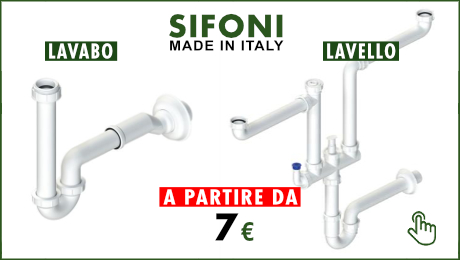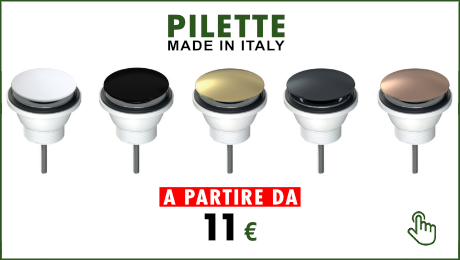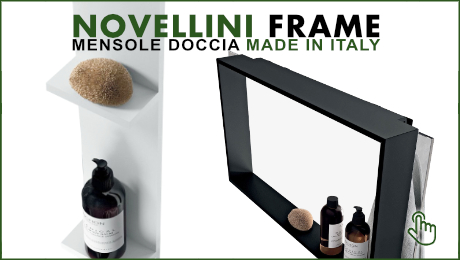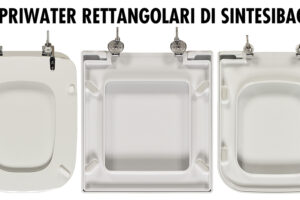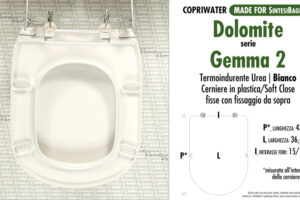We have seen how, over the last few years, the proposals of ceramic manufacturers are all conforming to sanitary ware series with reduced dimensions, or in any case, that fall within the standard of 55 cm maximum. Which was then the classic measure in depth before the 70s and 80s. It was during this period that the first forms of sanitary ware that we can call large-sized were introduced. We have seen the main ones with their toilet covers in previous post: “Large sanitary ware covers” Italica by Pozzi Ginori, Gran Sasso by Hatria/Spea, Amica Ceramica Globo, Synua Axa Ceramica and Lago Dolomite. The characteristic feature of all these ceramic series is the size standard of the WCs, which has risen from 50/52 cm to much larger sizes of 55, 56, 57 cm and in some cases even 60 cm and more. As a consequence of this growth, toilet seats have also increased in size, and in order to fit these sanitary wares they must have precise and correct dimensions. When searching for a replacement in shopping centres and DIY stores, one quickly realises that the normal and universal seats currently on the market are incredibly small and out of proportion for sanitary ware with those dimensions. Toilet seats measuring 50, 51, 52 cm and perhaps 53 cm in length can hardly be considered a standard size. Moreover, colour was also very much in fashion in the bathroom at that time, which led to many of these series being sold in coloured rather than white versions. Today we will see how these oversized sanitary ware have spread colours that have become legends in the bathroom furnishing world.
The champagne-coloured toilet seat and Italica Pozzi Ginori
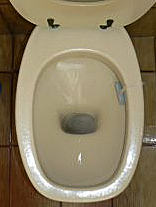
One of the most important series in the bathroom furnishing world produced by Pozzi Ginori required a toilet seat cover as long as 50 cm. It was Italica. A very well-known rectangular shape that gave stimulus to other productions of the ceramic house in those years as we have seen in the post: “Sanitary ware Pozzi Ginori old square models. Square, Italica and Italo Duo which toilet seat cover is correct?”. Many customers at that time chose it in the champagne colour (about this colour we suggest you read another post of ours for a visual perception of it in digital HERE). Its size (54/55) necessitates a dedicated toilet seat for the toilet in the size 50×36 with a centre distance of 15/15.5. The toilet seat for this toilet in all original colours can be found in the Sintesibagno store at the following link [ clik here ]. As you will see in the link, in addition to the colour we are extensively discussing, it was also produced in all the colours of the time: pink, light blue, blue, brown, green and grey.
The fern green and Lago long Ceramica Dolomite toilet seat
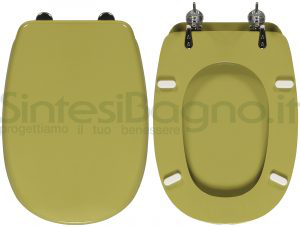
Large sizes like italica for this Dolomite sanitary ware, called Lago. A series of large sanitary ware from the 70s and 80s by this ceramic company capable of many successful productions as we have seen in previous post: “The old Ceramiche Dolomite series and their toilet seats” series CLODIA, series RIO, series FLEO, series EBLA, series PERLA and SWEET LIFE. A toilet seat cover with an elongated oval shape measuring no less than 50 cm, which was produced in many colours, apart from clearly the FELT GREEN shown here in the picture, champagne, deep blue, brown and pomegranate. All coloured toilet seats for the Lago series by Dolomite can be found in the Sintesibagno store at the following link [ clik here ]
The mink-coloured toilet seat and Gran Sasso Hatria Spea
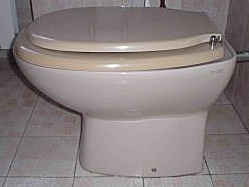
Today, Hatria is the new name of SPEA, a Teramo-based ceramic company founded back in 1965. We have seen its history in the post “Ceramica Spea, the origins of Hatria shapes. All toilet seats out of production” where we discovered, in addition to Gran Sasso pictured here, SELECTA, LARA ed EDOS. The Gran Sasso sanitary ware and its toilet seat cover are very large: a good 50 cm. One of the most successful colours in the period in which it was produced was certainly the MINK. Often mistaken for the champagne colour.
To help users identify the colour of their sanitary ware, the Sintesibagno team tried to put similar colours side by side to try and understand the differences, you can find this information in the post: “COLOURED toilet seats – How NOT to make the wrong choice!” In the image opposite, we have placed three colours next to each other that are regularly mistaken for each other. However, these three colours placed side by side allow the differences between them to be perceived. As you can see, CHAMPAGNE is the typical beige colour (if you want a reference to the physical world, think of cream ice cream).
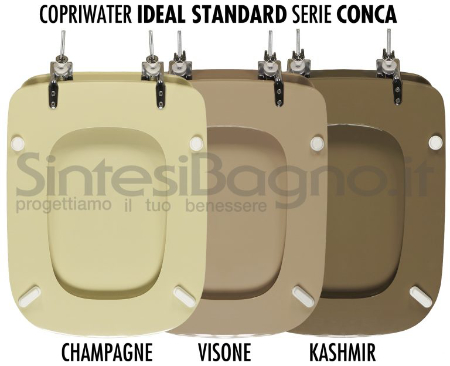
Often mistaken for CHAMPAGNE is MINK, but as you can see from the comparative image it is no longer a beige, but we are already in the light brown category (always sticking to ice cream flavours as an aid from the physical world think of hazelnut ice cream). Many customers looking at the sanitary ware and searching for its colour describe it as a light brown with very slight nuances depending on the bathroom light of even pink. Lastly the colour KASHMIR, here we are already in the shade of brown, although not the brightest that Ideal Standard has produced (walnut, beaver… which you can see HERE), staying with the help of ice cream flavours I would see it as coffee. Back to the Gran Sasso mink toilet seat and the other colours in which it was produced: champagne, light blue, fern, grey, brown, black and pink. All coloured toilet seats for this model can be found in the store at the following link [ apri LINK ]





